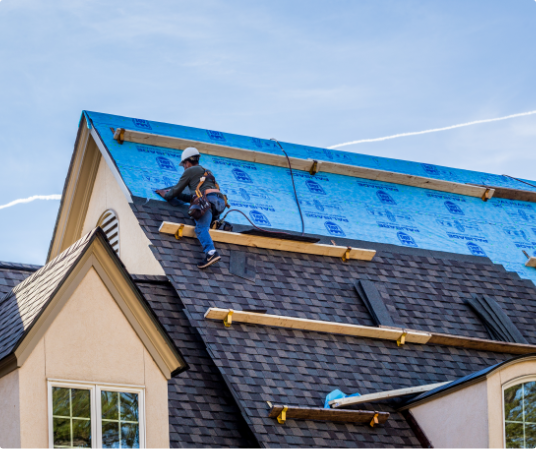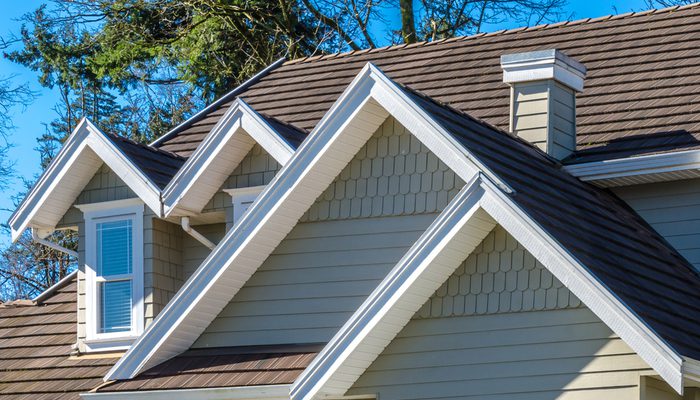Ideal Practices for Ensuring Correct Roof Ventilation
Making sure proper roof covering air flow is critical for the longevity and efficiency of a roofing system. A balanced consumption and exhaust air vent proportion, typically 1:300, plays a pivotal duty, with consumption vents ideally put at the lower side of the roof covering for awesome air entrance and exhaust vents at the optimal for cozy air departure. Normal evaluations to determine obstructions and maintain clear airflow are critical. Maintaining insulation away from vents is important to stop air movement restriction. Recognizing these fundamental components establishes the stage for more detailed insights into installment and maintenance techniques that can considerably enhance your roof covering system's efficiency.
Understand Ventilation Basics
Effectively comprehending ventilation basics is necessary for guaranteeing the longevity and performance of roof. Effective air flow mitigates wetness build-up and temperature level extremes in the attic room, both of which can lead to considerable structural damages over time. A well-ventilated roof covering assists in stopping common issues such as mold development, timber rot, and ice dams, which can jeopardize the integrity of the roofing materials and the underlying frameworks.
The primary goal of ventilation is to help with the movement of air, enabling for a regular exchange in between the exterior and interior settings. This equilibrium is attained with a mix of intake and exhaust vents that interact to maintain optimal air movement. Consumption vents, generally situated along the eaves or soffits, enable fresh air to go into the attic room, while exhaust vents, commonly located at or near the roof covering ridge, make it possible for warm, damp air to escape.
Secret elements influencing the performance of roof covering air flow consist of appropriate positioning, adequate sizing, and guaranteeing that both intake and exhaust vents are unhampered. Routine evaluation and upkeep are crucial to recognize possible clogs, damage, or inefficiencies in the ventilation system, thus protecting the roofing's performance and durability.
Sorts Of Roof Covering Vents
Roofing system vents play an essential duty in preserving reliable attic room air flow and, by extension, the total wellness of the roof. Numerous kinds of roof covering vents are readily available, each with distinct benefits tailored to details roof demands. Ridge vents, as an example, are set up along the roofing system's height, enabling warm, damp air to escape from the attic. They supply continuous air flow and blend seamlessly with the roofline, making them both efficient and cosmetically pleasing.

Soffit vents are installed under the eaves and operate in tandem with roofing vents to guarantee a well balanced consumption and exhaust system. By permitting cooler air to go into from below, soffit vents promote the expulsion of warm air through top vents. Gable vents, situated on the outside walls of the attic room, offer one more effective service, specifically in homes with gable roofings.
Evaluate Your Current Air Flow

Following, think about the age and problem of your roofing products and air flow elements. Older systems might not conform with current building ordinance or may have deteriorated gradually, reducing their efficiency. Conduct an extensive examination to recognize any indications of damage, such as rust, damage, or gaps that can endanger the system's performance.
In addition, gauge the attic room temperature and moisture degrees. Heats and moisture can suggest inadequate ventilation - gainesville fl roofing companies. Utilize a hygrometer and thermostat to obtain exact analyses, contrasting them with outdoor problems. Relentless discrepancies suggest potential issues that need addressing.
Installation Best Practices
Effective installment of roof covering air flow systems is critical for making certain optimal performance and long life. Proper installment starts with recognizing the certain air flow demands of the roofing and the structure it covers. This includes determining the right proportion of intake to wear down vents, typically adhering to the 1:300 rule, which specifies one square foot of ventilation for each 300 square feet of attic room floor area.

Intake vents must be set up at the roofing system's reduced edge, frequently in the soffits, to allow trendy air to go into. Exhaust vents, on the various other hand, ought to be mounted near or at the roofing's height to help with the leave of cozy, damp air.
Seal all air vent links thoroughly to avoid air leaks and prospective water infiltration. Usage top quality materials and comply with producer standards to guarantee longevity and performance. Additionally, integrating ridge vents with baffles can substantially boost air flow effectiveness by protecting against wind-driven rainfall and snow from getting in the attic.
Eventually, specific setup of roofing ventilation systems mitigates potential concerns such as mold growth, ice dams, and structural damages, making certain the roof's integrity and the structure's overall health.
Regular Upkeep Tips
Uniformity in upkeep methods is essential to making sure the long-lasting performance of roof ventilation systems. Routine inspections are critical, ideally done biannually-- in the spring and loss. Throughout these inspections, guarantee that vents are without particles, nests, and other obstructions that can hinder airflow. Examine for any type of signs of dampness accumulation or mold and mildew, as these can suggest improper air flow or leakages (roofing companies).
Cleaning the vents is one more necessary task. Utilize a soft brush or a vacuum cleaner to eliminate dirt and debris from intake and exhaust vents. Be cautious not to damage the vent screens or louvers during the process. In addition, inspect the attic area for any indications of water damage, which might compromise the honesty of the roof covering system.
Correct insulation is equally important. Ensure that attic room insulation does not block the vents, as this can significantly restrict air movement. Reposition or change it to maintain a reliable barrier. if any kind of insulation has actually moved or resolved.
Lastly, change any type of damaged or missing out on components quickly. Broken vents, fractured shingles, or deteriorated blinking can all contribute to inadequate air flow and should be dealt with right away. Routine upkeep ensures that the roof ventilation system operates optimally, consequently extending the lifespan of the roofing itself.
Verdict
Making sure proper roof ventilation is vital for keeping the efficiency and durability of a roof system. Adherence to the 1:300 intake and exhaust vent proportion, coupled with the critical positioning of vents, is necessary.
A balanced intake and exhaust vent proportion, generally 1:300, plays additional reading an essential duty, with consumption vents preferably put at the reduced edge of the roofing for trendy air access and exhaust vents at the height for cozy air exit. Intake vents, typically situated along the soffits or eaves, enable fresh air to enter the attic room room, while exhaust vents, typically positioned at or near the roofing system ridge, allow hot, moist air to get away.
Soffit vents are set up under the eaves and job the original source in tandem with roof vents to make certain a balanced intake and exhaust system. By allowing cooler air to enter from below, soffit vents help with the expulsion of hot air through top vents. Adherence to the 1:300 consumption and exhaust air vent proportion, paired with the calculated positioning of vents, is important.